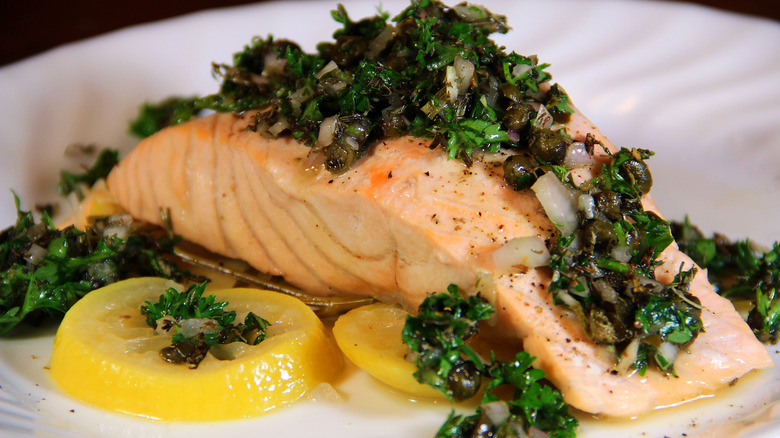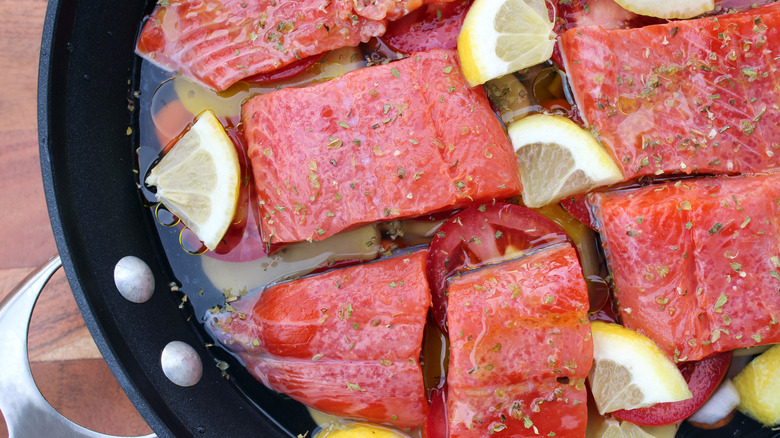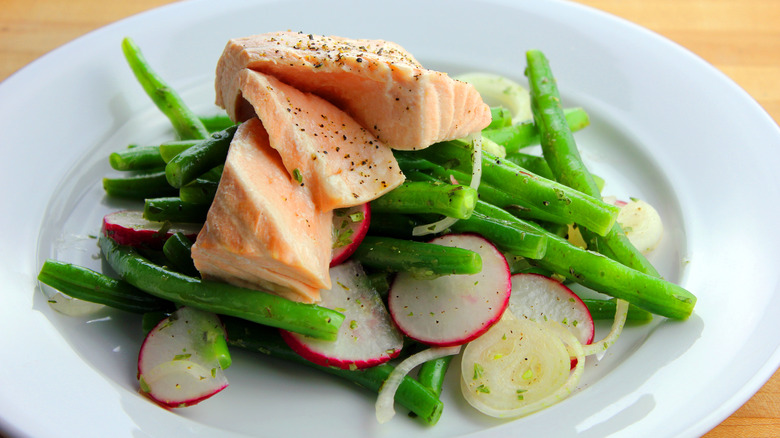The Bonus Step That Keeps Poached Fish Extra Moist
We may receive a commission on purchases made from links.
The finicky protein known as fish can go from moist to chokingly dry in the blink of an eye. A slippery glide of a fork through the perfectly cooked fillet quickly becomes sawing through tough flakes almost instantaneously.
Poaching is often believed to be a cooking technique that helps avoid this issue. It's a pretty straightforward cooking method, and it's suitable for pretty much any type of fish — from fatty salmon to lean and firm halibut to lobster and shrimp. Whether you want to add some fat-free flavor with lemon and aromatics to that halibut, or indulge in buttery poached lobster to place atop a roll, poaching fish is a versatile technique.
Cooking a piece of fish in a liquid must impart some moisture to the flesh, right? Yes, it sure does. However, there is an extra step you can take next time you're poaching a delicate fillet to ensure that the moisture stays put and the texture is enhanced and supple.
What is poaching?
Poaching is simply cooking an item of food by submerging it in a warm liquid, explains Master Class. The options for liquid to use are comprehensive. Everything from water to oil to broth to wine will do the job. As a result, it really just comes down to what flavors and/or fats you would like to impart into the final product. Poaching is a much slower process than most other cooking techniques, but that makes it perfect for delicate foods you wish to keep intact and tender, such as fish.
Unlike boiling, the poaching liquid is kept at a lower temperature and subtle simmer. Many poaching technique pros suggest the food and liquid should start off cold in a pot and be slowly brought up to a temperature just below simmering. The heat from the liquid is transferred to the food, allowing the proteins to cook without any moisture loss occurring. It may sound like a simple technique, but correct timing and temperature are of the utmost importance and can make or break the final dish (via Jessica Gavin).
The extra step that ups the moisture
Harold McGee, author of the culinary science bible "On Food and Cooking," offers up an easy poaching technique. This technique offers a twist along with an extra tip to ensure maximum moisture and a tender texture.
McGee suggests submerging a moderately sized piece of fish in liquid that is just below the boiling point in order to quickly kill off any bacteria on the flesh. Here comes the easy extra step: McGee then recommends removing the pan from the heat and adding cooler liquid so the temperature drops to around 150 degrees Fahrenheit. This reduction in heat will allow the fish to cook slowly and smoothly.
According to McGee, allowing the fish to cool before it's exposed to the air combats any evaporation and moisture loss that will affect the texture of the fillet. Not only does poached fish make a moist and tender meal in the moment, it should keep for a day or two in the fridge without drying out, and is even delicious to dig into chilled (via The Washington Post).


